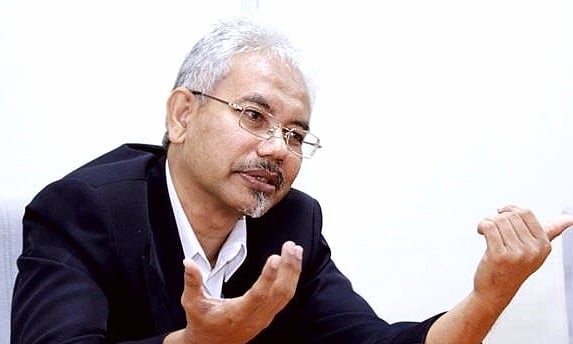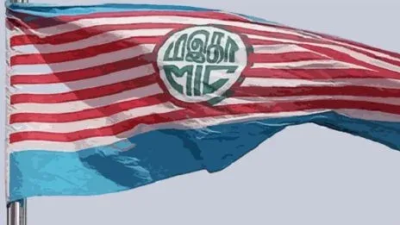
Another potentially explosive issue about tiptoeing around Muslim’s cultural understanding of Islam is about to flare up.
In this article, as an academic who has knowledge in Islam, art and history of architecture design, I wish to lay the “academic” cards on the table of the issue of Islam and statues.
Firstly, I would like to insist that I am not for or against the building of a Mazu statue. I am writing to clarify what I know of Islam in relation to the issue of statues as interpreted in the actions and sayings of the Prophet Muhammad and the cultural interpretations of ordinary Muslims who do not have the knowledge of civilizational history, architecture and art.
Secondly, I wish to clarify that there are three types of huge human statues in human history.
First is the representation of a deity or a sacred personality. We have examples of the huge Buddha statue in Kelantan, the huge Hindu statue in Batu Caves and the famous Jesus statue in the mountains of South America. All these statues are directly related to the idea of religion and worship.
Next, we have statues that are considered a memorial to an historical personality like the memorial of Abraham Lincoln in the US. We may also have seen the memorial of statues of Lenin in Russia that have the same purpose of “glorifying” an important personality for his or her people.
The third type of statues is more of symbolism of an idea. The Statue of Liberty is not the personification of a living or once-living person but an idea about freedom, beauty, purity of intention and many other values.
All these types of statues whether of a deity or a memorial or an idea are works of architecture and art.
The works are considered architectural because it involves site planning, construction of structures to support the statue and sometimes an interior spatial use.
The works are all related to art because the main purpose of art is the communication of a message without the use of words or sound, but the visual and tactile expressions of the work pieces.
Again, I emphasize that art is a form of communication, not worship.
Thirdly, why are Muslims so “frightened” or fearful of statues, big or small?
Firstly, there was the incident of the Prophet Muhammad breaking the idols in the Kabah when he came to political power in Mecca.
Secondly there is also the Biblical story from the Torah and repeated in the Qur’an of how Abraham destroyed all the idols of his tribe and left one standing.
Thirdly, there are recorded authentic hadiths or sayings of the Prophet Muhammad who disallowed the painting of images or the making of statues to imitate any living life form like an animal or a human being.
Now the question here is, what was the intention or meaning of the three historical events and sayings of thousands of years past?
For me, the Prophet destroyed the idols because the Arabs of his time had polluted and perverted the Abrahamic faith of worshiping the one invisible or unseen God. Thus, the Prophet was trying to correct the Abrahamic faith, not the Hindu faith, nor the Buddhist faith or any other except his own people.
There was no command to destroy other statues of other peoples’ faiths other than Christianity and Judaism because they were both part of the Abrahamic Faith.
On the second story of Abraham, he was again trying to correct the religion of his own tribe.
Of course, clerics will read both incidents of Muhammad and Abraham as a signal to destroy all idolatrous religions, but that is unfair as there was no direct instruction as well as social and historical contexts of both prophets having to deal with other religions due to their restrictions of movement and communication.
Now, with regards to the saying of the Prophet, the Art Historian Oleg Grabar pointed that the hadiths only came into effect a hundred years after the Muslim invasion of many Roman territories that had churches, temples and palaces where the decorative arts contained sculptures, relief carvings and animal or human forms abound.
He suspected that the prohibition was a political ploy to discredit certain Muslim leaders by other Muslim leaders.
At the most conservative end, Muslims forbid any pictures drawn or the construction of reliefs or full sculptures that resemble an animate object.
So, by this definition the Muslim world must not have paintings, carvings, statues, mannequins, plastic human anatomy life-size “dolls” for medical studies or any drawn pieces on porcelain, weapons or any artifacts.
Thus, the prohibition of wayang kulit may have something to do with this understanding, but the hulu keris or the handles of the Malay keris that have fierce demons or raksa as well as swans have never been prohibited.
The mufti of Perak once declared the statue of the eagle in Langkawi as haram while other muftis have denounced the Tugu Kebangsaan as going against the spirit of the hadith.
Why has this thing become a problem to Muslims?
As I have said many times before, Muslim clerics and religious officers like the muftis hold absolute power over proclamation of what is halal or haram, but all of them are uneducated in the three important fields of Civilizational History, Art and Architecture and finally History of Religions.
Without these vast knowledge of human civilization, the clerics only have a minute and minuscule knowledge of one school of interpretation of Islam.
Thus, the idea of the Mazu statue “disturbing” the spirituality of Muslims is an arbitrary ruling that has no basis in an Islamic interpretation that takes into account the knowledge of human civilization, art and architecture and the religious history of man.
After that, it becomes a political issue and then a racist issue played up by extremist NGOs and political parties.
As a Muslim, when a friend asks me to meet in a place where they serve alcohol, I would come. When my friends drink alcohol, I order Coca-Cola or teh tarik, if the place has it.
When my Hua Lian schoolmates eat pork at our reunion, I eat other things.
When I go to meetings during Ramadan and non-Muslims eat during the break, it’s fine for me.
Malaysians and the human civilization do not have to tiptoe around me just because I am a “sensitive Muslim.”
If you come to my house in any attire that your faith and culture permits, datanglah. I’ll only ask you to take off your shoes. Itu saja!
So, I have no issues, as a Muslim, if you want to build a big statue of Mahathir, Michael Jackson (of whom I am a huge fan) or a deity close to a mosque or to my house.
To build or not to build the Mazu statue, as far as I understand, is more of an economic issue of tourism and business rather than religion.
What is the difference then between the Mazu statue and the eagle statue in Langkawi? Just the size-lah, in one sense.
But the Mazu statue is said to have a significant belief in the faith of some coastal Chinese and that makes it a lot more than an economic issue.
To me, it is the problem for the Kudat people and the Sabah government, not a conflict of Islam issue. But of course, the Islamic authorities will have the last say.
In conclusion, others should not have to tiptoe around Muslims because Islam is vaster and more expansive than most Muslim minds who restrict the religion within their small minds and tribal constructs of faith.

(Prof Dr. Mohd Tajuddin Mohd Rasdi is Professor of Architecture at a local university and his writing reflects his own personal opinion entirely.)
ADVERTISEMENT
ADVERTISEMENT








































